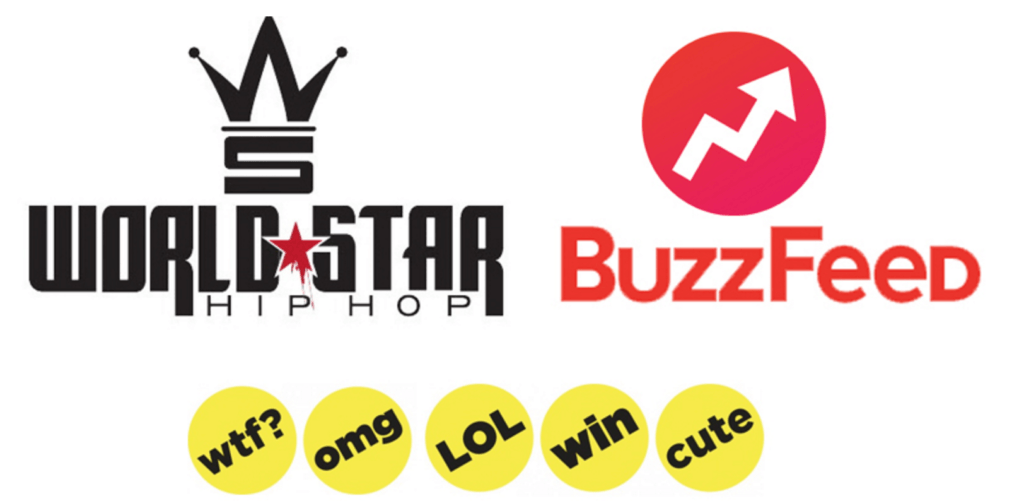Article's Content
Is your content driving engagement but failing to convert?
Clicks are great. Page views are great.
But when those metrics turn into conversion – It’s time to pop a bottle of champagne.
If you’re like most marketers, you clicked on this blog post because you want to learn how to turn page views into customers or visitors into sales.
Am I right?
Good, because that’s what I’m aiming to do in this blog post.
At this stage in your career, I’m hoping you realize that not all content is equal. Content doesn’t always achieve the results you want just because it exists.
Each piece must be created with it’s own purpose.
Content marketing costs 62% less than traditional marketing and generates three times as many leads [Demand Metric]. However, when it comes to generating content to fulfill your strategy, you can’t lose sight of your main objective – to sell.
We know that 60% of people are inspired to seek out a product after reading content about it [Demand Metric]. It’s up to you to ensure that you’re leveraging this opportunity with the content you create. To help you do this, I’ve compiled six tactical tips for creating content that converts:
1. Know Your Audience VERY WELL
I talked about this before as being one of the most important things a brand should do before they start creating content. Understanding your audience is key to developing an effective digital strategy and will help you come up with ideas for the type of content you should write.
If you ask any business owner who hasn’t gone through a persona process to describe their customer, you will hear a response that describes a perfect human. Ok, some entrepreneurs and marketers are more tuned into reality, but for the most part, we base our “target audience” solely on assumptions and guesses. Instead of playing guessing games with your target audiences and personas, it’s important to base your approach on insights and intelligence.
Create content that appeals to the needs, desires, and concerns of your audience in order to achieve the conversions you crave. Understand the type of content they’re more likely to engage with and understand the channels they spend time on.
Once you have a solid understanding of whom your audience is and what their unique needs are, write relevant content that adds value. Use a voice that they’ll trust and relate to; writing in the way they’d want to read it. Writing for the needs and wants of your reader is one of the most important drivers of success in content marketing.
Create content that leaves your audience better off because they read it.
2. Craft Headlines That Make BuzzFeed & UpWorthy Jealous
The headline is the most important part of your content. Great headlines attract more readers, which can lead to more sales. Whether we’re talking about a Whitepaper or a Blog Post – the headline can be the difference maker between a piece of content being read or not.


There is a bit of science behind developing effective headlines. When creating headlines for your content, ask yourself the following questions:
1. Does it create urgency?
2. Does it create intrigue?
3. Does it demand attention?
4. Does it offer a solution or address a pain point?
Ideally, your answer should be yes to at least one of the questions above.
Easy tips for creating great headlines include, incorporating simple direct language, numbers and lists, keywords that reflect the content and resonate with the reader, and powerful language. One of the best resources on the topic of headlines is this presentation from the folks at Upworthy that talks about how they craft compelling headlines. The insights and strategies they cover can be easily applied to your own headlines and help you stand out in the noise.
Adam Mordecai, Upworthy’s Editor-at-Large gave a handful of tips on Quora when asked about their process. Some of my favourites from his post were:
- To optimize shareability you want to make sure everyone can feel comfortable sharing it. Think to yourself, “Would my mom share this headline?” If not, do something different. Unless you are only targeting a subgroup and don’t care about shareability.
- Don’t make people take positions they might be uncomfortable with. For example, “I Really Hate All White People” is going to not get shared, whereas, “An Open Letter To Pasty People” is far less hostile and more likely to get shared.
- Always test. No matter how clever you think your headline is.
3. Leverage The Power Of Emotion To Drive Action
Once you get readers’ eyes on the page, you need to make your readers feel something. Not just any emotion, but emotion that drives action. Positive, inspirational and uplifting content has been shown to always drive more virility than negative stories. People like to feel good. That’s why you see motivational Instagram accounts with thousands and thousands of followers.
When using emotion in your content, focus on eliciting happiness and desire in your audience. It’s this type of content that allows you to create stories worth sharing.
Sales professionals have been tapping into techniques that evoke emotional responses for years in effort to build stronger relationships with clients and ultimately improve their sales.
How do they do it? They leverage specific emotions that drive behaviors.
Similar to the research that suggests happiness as an effective driver for social media sharing, joy can also be a driver of sales. Simply put, happiness is a driver of action. What that action is depends on the situation in which the emotion is felt.
Here are three approaches to eliciting happiness and desire in your audience:
- Use storytelling – Tell a story your audience can relate to. People like to feel connected to something and someone else. People like to know that others share their experiences, and that they are a part of something larger.
- Create content that helps others self-improve – People want to be the best they can be. They want to succeed. Create content that gives them the tools and information they need to improve their own lives.
- Create FOMO – People don’t like missing out on something awesome. A great way to get people to act is to create content that people won’t want to miss out on. Share secrets, loopholes, tactics for success, or hacks for winners. Use this approach to create desire in your audience to read on and take action.
4. Collaborate With Influencers & Others
It’s not uncommon for content marketers to collaborate with influencers in order to achieve better results. In fact, I’m a huge fan of it.
Influencer outreach is an important tool in content marketing, whether collaborating on content, accepting guest posts to your channels or offering guest posts for others’, or co-authoring an e-book or manifesto. Adding a credible voice to your content is a great way to increase readership, build trust, generate new leads, and ultimately acquire new customers.
Furthermore, testimonials remain a powerful tool in driving sales. Identify a few key influencers to use your product/service and provide written testimonials that you can incorporate into your content marketing strategy. Another effective approach is to offer product discounts or free gifts in exchange for new customer testimonials.
Word of mouth marketing still exists and still works, so use it!
5. Add Value Before Trying To Sell
No one likes to be the victim of an aggressive sales pitch. People buy from people they like and trust. Content marketing is all about nurturing relationships and satisfying consumer needs, not pitching or selling.
High converting content informs, advises, and offers solutions; it does not pitch products and services. In fact, in most cases a company and its products aren’t even mentioned in the content.
Some content marketers believe in a 90% rule, where 90% of your content is not promoting your own company, rather it focuses on the unique needs of your audience. While I’m not held to 90%, I do agree that a large majority of your content needs to reflect the interests and issues of your customers.
The more genuine your content is, the more respect you’ll earn from your audience and the more shares your content will receive.
6. Choose a Strong Call-To-Action
Choosing the right call to action is critical to achieving conversion.
You successfully got your audience’s attention and they consumed your content and now they need direction on what to do next.
What do you want your audience to do? Is it to sign-up for your monthly newsletter, download your free e-book, request a product demo, or share your content on social media?

The key is to ensure that the CTA you choose effectively contributes to your sales goals. That is, your CTA should help you move leads further down the sales funnel but should not be “buy now”. Save the hard sell for landing pages and direct sales tactics.
Some effective CTAs include:
- For more information on [subject] download my free guide [title of guide and link]
- What are the top three issues your start up is currently facing? Hit me up to chat, I’d love to help you achieve [subject] success!
- If you liked this post, you should check out [another blog posts related to subject]
The key to achieving the desired CTA is quid pro quo.
You must first deliver something of value to achieve something in return.
BONUS TIP: Content Distribution
Don’t forget about distribution – it’s just as important as the content you create.
Creating great conversion content is only beneficial if someone reads it. It’s important to create content that is aligned with your target audience’s interests, but you must also strategically place it in front of them. While most things in life aren’t delivered on a silver platter, your content must be the exception.
For more on distributing content that converts, check out my post: Three Hacks On Creating & Distributing Content That Actually Converts








